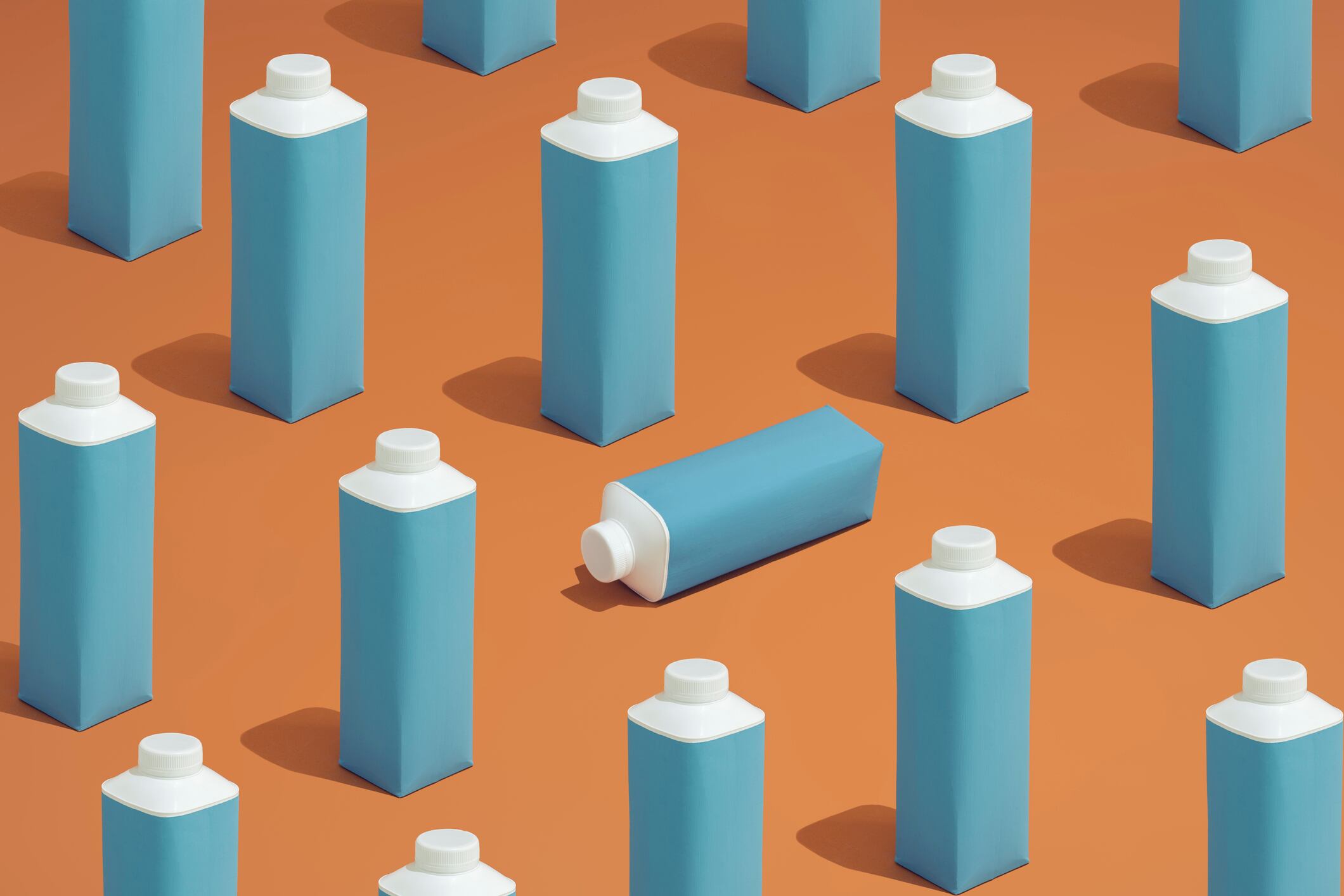The Coca-Cola Company is a unique entity. It’s a powerful brand that’s recognized the world over (it’s often said that the three best known words in the world are God, Titanic and Coca-Cola).
And yet, the company still champions the importance of following local trends and local consumer preferences. Look past the flagship brands such as Coca-Cola, Sprite and Fanta and its portfolio is, in fact, full of local brands for local markets.
But what does that mean in practice?
The company’s R&D hub in Brussels is a perfect example of how global might and local know-how collide to create powerful products for millions of people across Coca-Cola’s European footprint.
The hub, located on the outskirts of the city, is where this comes together: bringing together top brands with local ideas, and next-gen tech with tomorrow’s consumer trends.
The Brussels R&D hub celebrates its 25th anniversary this year: as part of this, we find out how products go from conception to shelves... and all the work in between.
Coca-Cola’s R&D network
Coca-Cola’s Brussels facility is one of a network of six major R&D facilities across the globe (two are located in the US: then there are sites in Tokyo; Shanghai; and Mexico).
Each of the global sites is tasked with a rather daunting mission: take Coca-Cola’s globally known and loved products… and adapt them to the local market while maintaining the DNA of each brand.
In Europe this is no small ask. Remember that the continent stretches from the sunshine of the Mediterranean to world-famous capitals like London and Paris; and from the gateway into Asia to the Arctic circle. There’s no shortage of cultures, flavors, tastes and preferences among some 750 million people (well over twice the population of the United States).
Coca-Cola’s ‘innovation vault’ in Brussels is where products are created for the European market. The facility deals with every stage of product development. There’s laboratories where formulations are tried and tested. There’s a sensory lab where finished products are assessed in every detail, from smell to color and from viscosity to mouthfeel. There’s a pilot manufacturing plant, which tests if products can be scaled up for mass manufacture. There are even mock stores and barista bars where marketers can visualize how consumers explore and select new products.
All this this makes it a fertile ground for creating new beverages and trialing new ideas: such as Coca-Cola’s first ever foray into bubble tea...
Meet Minute Maid’s bubble tea
You might not find it on shelves in most of Europe - and you definitely won’t find it in the US - but Minute Maid has met bubble tea.
This year, Cappy (the European branding for Minute Maid) has launched Cappy Bubble.
The innovation takes juice beyond a liquid and into something more: where texture and experience are part of the beverage.
And the innovation takes the bubble tea trend - one that originated in Asia and has since caught on in the US and beyond - and fuses it with fruit juice: a category that’s a firm favorite category in European markets but one that is also ready to be reinvigorated and refreshed for a younger generation.
The ‘bobas’ in Cappy Bobas are fruit-syrup filled pearls that gently burst under the pressure of teeth or tongue. This delivers a unique sensorial experience by combining flavor with texture.
This product is a point of pride for the Brussels R&D team: as it is the first time that bobas have been developed and commercialized within the company.
Cappy Bobas was developed over two years by the juice innovation team. Not only did they have to think about the normal considerations for juice (think flavor, freshness, stability...) but the bobas posed a new challenge. How to keep these bobas stable and intact while being shaken around in a bottle - yet with enough flexibility to pop easily in the mouth?
And how to get these bobas in the drink in the first place? How can they be produced and then distributed equally into bottles? How can they withstand the rigors of bottling?
That’s why the Brussels R&D center has its own pilot manufacturing plant. The facility allows developers to test how new products react on the production line at the high speeds and mass volumes of at any Coca-Cola bottler.
And the facility adheres to the same exact safety and hygiene standards as any Coca-Cola production facility. That’s partly about replicating real-life conditions, but also because products from this facility are going out to a small group of select real life consumers: who test products and report back to the R&D team.
Orange is not just orange...
The US, of course, is Coca-Cola’s stronghold. But successful US innovations need to be adapted to the European market.
Take Fuze Tea, for example. Fuze Tea has grown over the past two decades in the US, tapping into key trends of better-for-you refreshment. But Fuze Tea did not sail directly from the US to Europe when it launched on the continent in 2018.
The R&D team in Brussels put the product through its paces: ensuring the flavor and product resonated with European consumer lifestyles and taste profiles. Since then, Fuze tea has grown into one of Coca-Cola’s key brands in Europe as the RTD tea category booms, and the company has introduced further blends and variants.
The big project for 2025 has been BodyArmor. This US power brand (which Coca-Cola bought in 2021 to take on Gatorade in the thriving sports drink market) has just made its European debut in Spain: and the Brussels team was behind adapting this for a European audience.

A large focus at the R&D hub is regulation. Much of Europe is underpinned by European Union regulations: which can differ substantially to the United States.
It might not sound very glamorous: but much of the innovation that happens in Brussels is about taking US formulations and adapting them to EU or other regulations outside the US.
In the case of Bodyarmor, adapting this brand for the European audience is just part of a strategy in the wider advanced hydration category: with options in Europe ranging from Aquarius, a popular choice for daily hydration, or Powerade, for recharging after intense physical activity.
Europe: The birthplace of Fanta
Fanta was first created in Naples in 1955 and is now enjoyed by millions worldwide.
The Brussels R&D team has guided Fanta's evolution in Europe , fine‑tuning recipes to reflect changing preferences. A key innovation has been sugar reduction: in Spain, for example, the work of the Brussels R&D Center enabled a reduction in sugar content.
All this work comes together in Coca-Cola’s sensory lab: a completely white, windowless room where all external factors that can influence our sense of taste - light, sound, smell and more - can be controlled.
Here, new formulations for the European market can be assessed.
The classic example here is Fanta: where the color and flavor differs noticeably between the US and Europe (Fanta in the US uses high fructose corn syrup, Yellow 6 and Red 40; Fanta in the UK uses sugar and sweeteners and vegetable extracts such as carrot and pumpkin alongside natural orange flavorings).
But this is a key example where European innovation may start to become more important on a global stage. As the US cracks down on HFCS and artificial ingredients, the work already done in Europe to remove and replace these ingredients will become increasingly valuable to US teams.
But how do you describe a flavor? Orange is not just orange: there are many nuances to a flavor. Coca-Cola’s teams are impressively adept at assessing what they taste then describing it meticulously: is the flavor fruity or lactic, tart or zesty?
This comes from years of training: most of the 80+ experts at the site have come from years of training in food science or similar areas: with some 500+ years of study between them.
The sensory lab can eliminate external stimuli and ask scientists for their honest perceptions about new formulations and recipes.
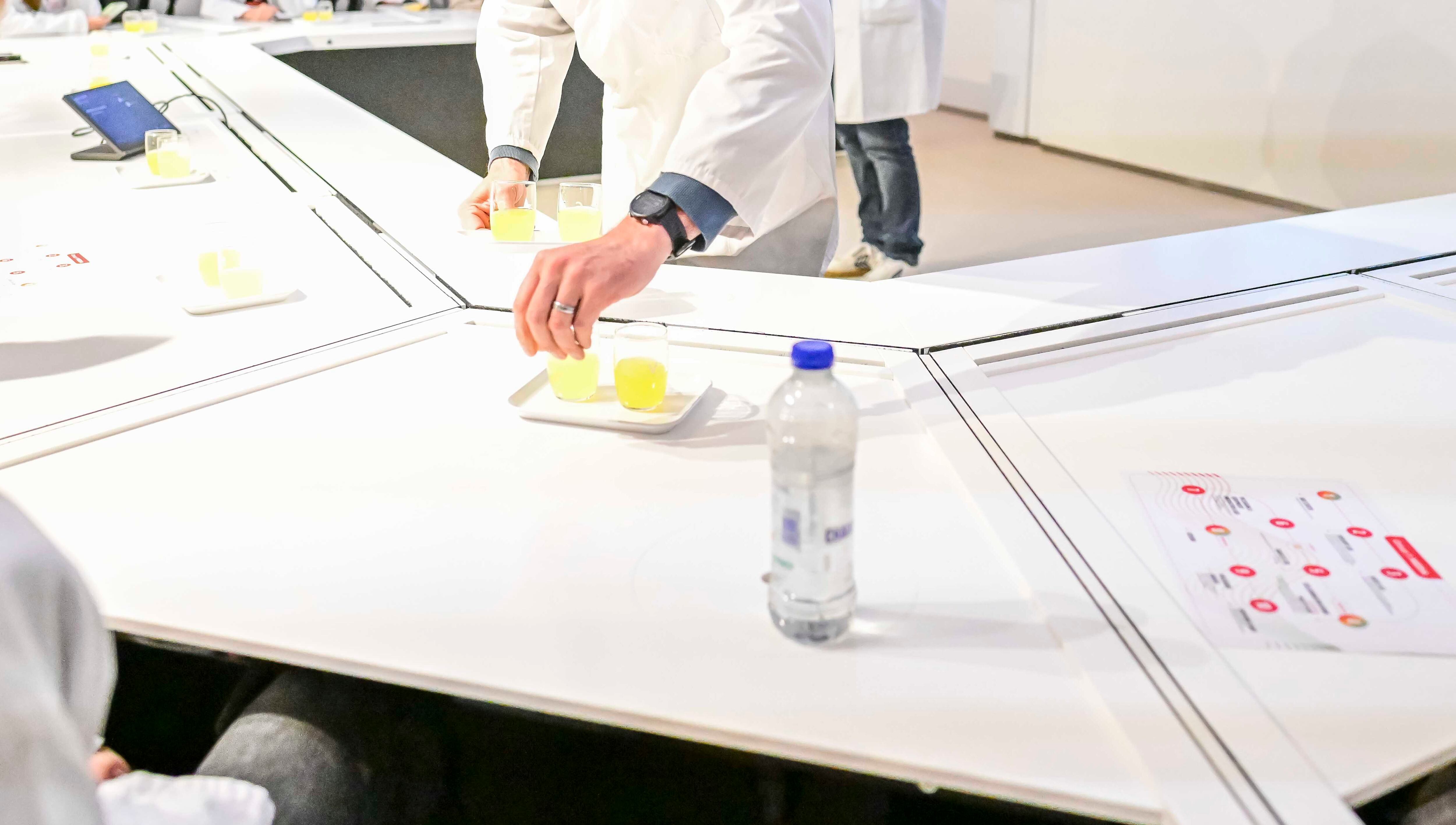
Brussel’s special focus: Rethinking packaging
Coca-Cola’s Achilles Heel? Plastic bottles.
The company is constantly under fire for its prolific use of plastic bottles: a packaging format that remains prominent across its portfolio and that remains in the crosshairs of environmental campaigners given the sheer scale of its business. Fire was added to the flames last year when the giant stepped back from some of its previous sustainability commitments.
But the Brussels center is one of the packaging powerhouses in the Coca-Cola R&D network and the team in Europe are keen to point out where innovation has made a difference.
Take, for example, tethered caps. As of 2024, the European Union mandates that all plastic bottles must attach – or ‘tether’ – caps to bottles. This is to ensure plastic caps are recycled alongside bottles: rather than becoming litter or going to landfill.
For Coca-Cola – whose portfolio is heavily reliant on plastic bottles – this represented a major, critical project unique to the European market.

A cap is not just a cap: it’s the most complex element of packaging: it’s got to be watertight and seal the beverage firmly; it’s also got to be tamper proof (and clear to see if the bottle has been tampered with); yet still has to be easy for old and young to open.
In Brussels, the R&D team started putting pen to drawing paper way back in 2019: knowing that transforming the entire portfolio was going to be a major undertaking. And back then, there was no template: there was no approved EU standard and Coca-Cola took on the task of developing its own solution and enabling use by the broader industry.
But tethered caps are just one element of packaging innovation. The Brussels facility is a leading R&D facility for packaging innovation within the Coca-Cola network: hidden in the depths of the building is the Packaging Garage (no photos are allowed - even by staff - in this top secret area).
Packaging is a top source of greenhouse gas emissions at Coca-Cola: and it’s here that new ideas are put to the test. It’s all very well drawing a design on paper: but will it stand-up to real life use cases?
The packaging team at Brussels have been responsible for many initiatives across Europe. Alongside tethered caps, the biggest success story has been transitioning Sprite from hard-to-recycle green plastic to clear PET bottles: an initiative which has been adopted across the globe.
Many other projects, however, have also originated from this ‘garage’.
There’s the UK pilot to ditch labels on Sprite in the UK, instead etching the details on with a laser and relying on the recognizable green for the cap for shelf standout.
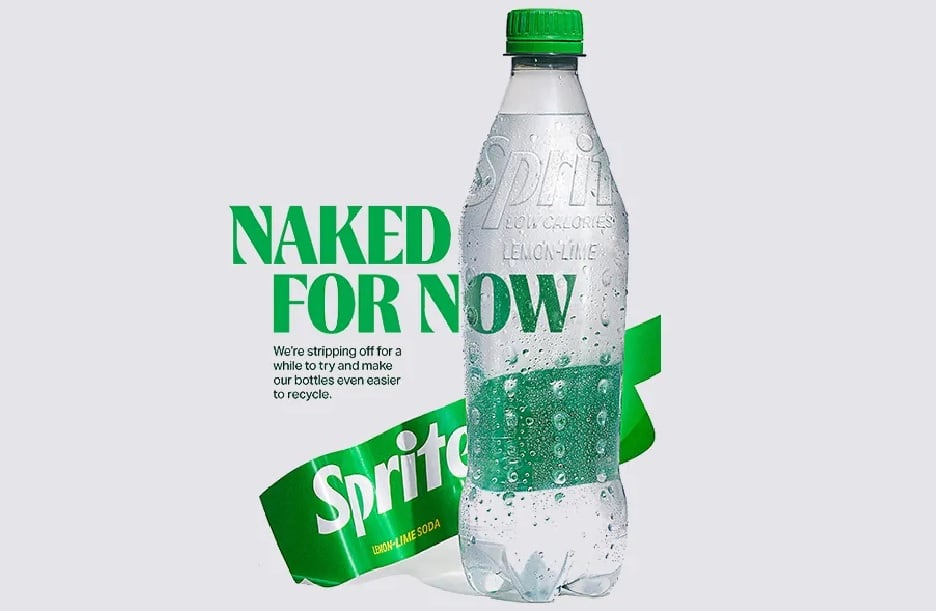
There’s paper bottles (Coca-Cola being part of the Paboco pulp bottle consortium along with Absolut and Carlsberg).
Then there’s the Keep Clip (a cardboard alternative to plastic rings for six-packs) which has been trialed in the UK and The Netherlands; and the Can Collar, which has a similar role in Spain.
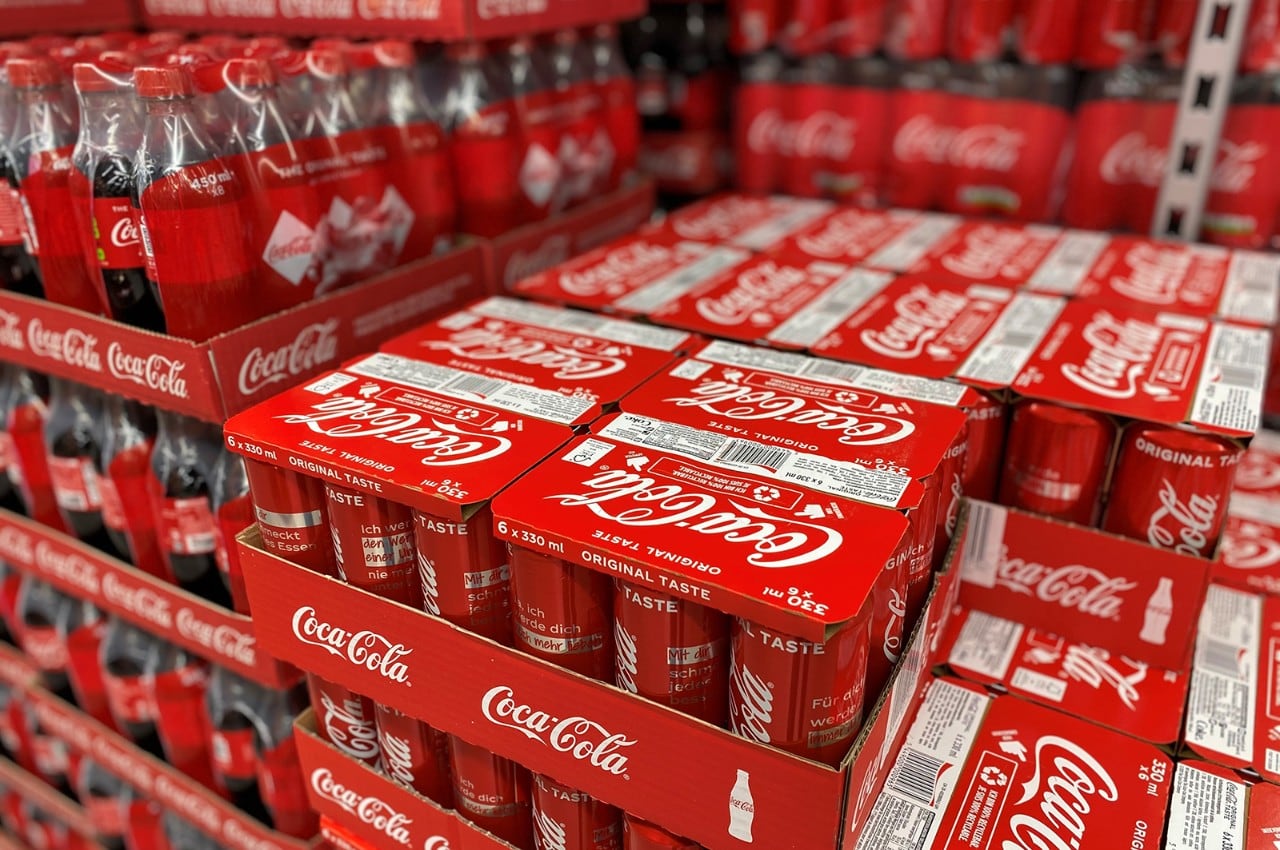
And Shield Plus is a circular crate solution which allows crates in hospitality to be made with 97% recycled plastic.
Learning from market place trials
Down in the packaging garage, these new innovations are put through their paces by Coca-Cola’s packaging geeks.
But rolling out in the real world is another issue entirely. And not all initiatives from the packaging garage have been runaway successes: some remain in the trial phase and limited in distribution.
But for the packaging team, it’s been invaluable to get the products onto production lines and into markets. That means collaborating with local bottlers to understand how new formats work on mass production lines; and understanding how new formats stand up in distribution and then, finally, how consumers react.
In the case of the tethered caps roll-out, for example: ‘learnings from the mass rollout – particularly around innovation, supply co-ordination and consumer insights – are informing other sustainable packaging initiatives across our markets’, a spokesperson told us.
And packaging is not just about packaging: it’s about rethinking how beverages are distributed as a whole.
The Olympics Games in Paris 2024 set the goal of organizing the ‘greenest’ games in history: including the commitment to half the use of single-use plastic (compared to the London Games).
Situated just an hour-and-half away by train, the Coca-Cola team in Brussels was responsible for developing new fountain systems for the event.
What was particularly challenging was that these systems had to be moved in and installed in an extremely limited period of time. The answer, the team realized, lay in the modular set-up of the fountains: allowing the blocks to be installed swiftly and effectively.
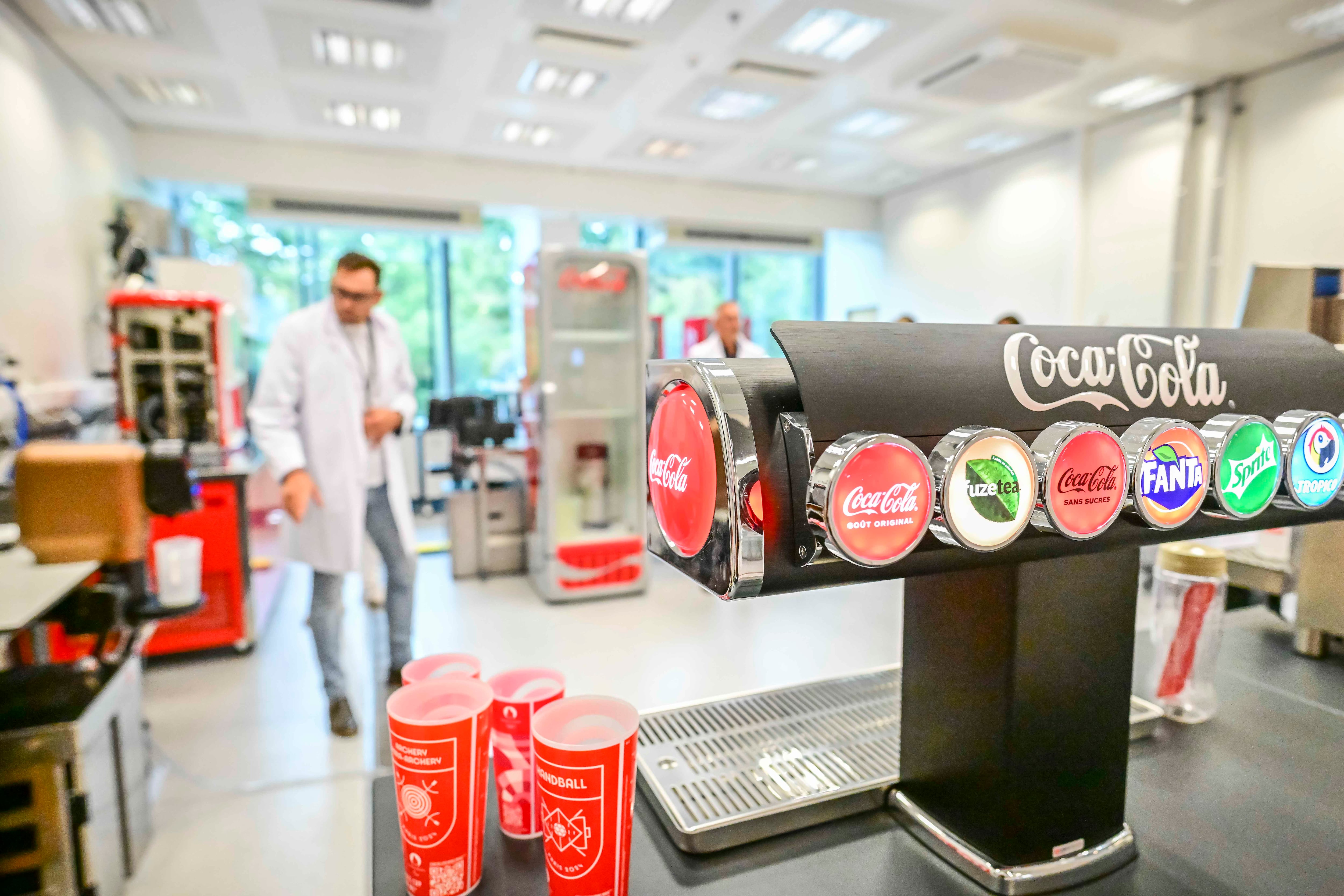
The future of innovation at Coca-Cola
What does innovation look like moving forward?
AI and technology is one area that’s always pushing boundaries: and technology will no doubt change how innovation is approached.
Innovation of the past has been tactile: Coca-Cola’s famous contour bottle being the iconic example. Innovation of the future will be largely technology based, says the team (imagine creating that bottle today... no pens and paper; but computer simulations and calculations that can assess plastic thickness, weight, sturdiness and more).
AI is being used in product development: helping formulators shift through ideas and formulas to find the winning recipe quicker.
And sometimes AI shows up in surprising ways: removing bias and subjectivity from humans. When it comes to trialing new products, AI can gather and collate honest answers from testers, without passing judgement or trying to influence answers (it’s hard to be honest, acknowledges Coca-Cola, when your boss is clearly angling for a particular answer).
And last year, Coca-Cola debuted its first AI Christmas campaign: one that’s just returned for 2025.
This campaign has been welcomed and ridiculed in equal measure, but, ultimately, shows how Coca-Cola wants to be at the cutting edge of AI development (last year, the company announced a five-year partnership with Microsoft to explore generative AI).
Coca-Cola’s famous Share a Coke Campaign is now ready to be propelled to the next level. As demonstrated by Sprite, lasers can now etch details onto bottles to remove the need for labels. Coca-Cola is now trialing how AI can take a picture of your face and then etch it onto bottles for the ultimate move in personalization.
The reaction to GLP-1 drugs from Coca-Cola’s R&D team - at least from the innovators in Europe - is cautious but calm: and they’re not overly concerned about the impact of these weight loss drugs on their drinks.
That’s largely because a lot of the work in innovating portfolios for a GLP-1 era has, in fact, already been done: in Europe, some 45% of the portfolio is already low and no calorie (Trademark Coca-Cola, for example, already comes in many different options to suit different needs: ranging from ‘full fat’ Coke to Diet Coke and Coca-Cola Zero Sugar).
What pins future innovation to the past and present? ‘Consumer-centric innovation’ is a mantra Coca-Cola uses again and again. That means looking at consumers and what they want; what their need states are; what they’re looking for... and what they’re avoiding.
Innovation might look very different today to when Coca-Cola was founded in 1886, or when the Brussels center opened 25 years ago. Innovation will undoubtedly look very different in the next 25 years. But the need to keep the consumer at the center of innovation will remain the same.



